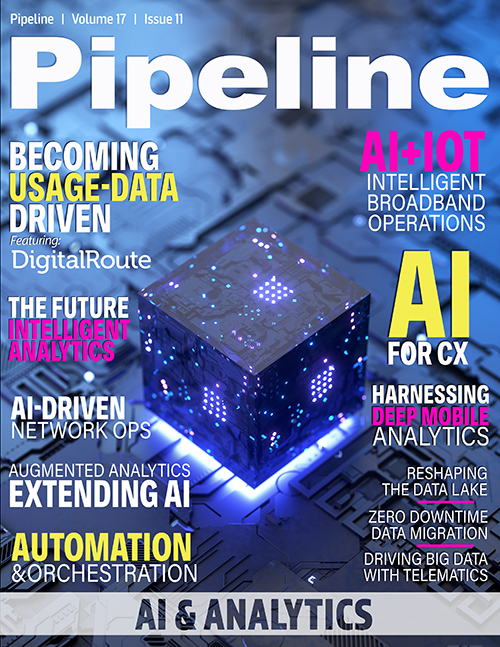AI, CX and the Road to Zero Touch
By: Ira Cohen

Among many other things, the onset of the pandemic completely transformed when, where, and how people access communication service providers’ (CSPs) networks. People who could work from home set up home offices in bedrooms and basements. When the schools closed, kindergartners and PhDs alike found themselves on laptops around the breakfast table working on their studies.
Office parks, middle schools, and colleges were emptied of their daytime inhabitants and their network service demands plummeted. When the home office became the only office and workers required daytime bandwidth in bedroom communities and apartment complexes, CSPs had to scramble to meet a new and shifted demand. This new shift in demand brought on an entirely new business model. Before, CSPs’ service level agreements (SLAs) were focused on higher-paying business customers. From an operator’s perspective, maintaining these SLAs was relatively simple, or at least predictable. CSPs had historical data on typical Monday through Friday office park usage. KPIs were well established and could be measured against SLAs.
The migration from the office park to the home office trampled those KPIs. In this new scenario, CSPs lacked historical data to measure usage patterns and no longer understood what was normal. People were using the network in new and novel ways. People who had previously surfed the web to buy products online were now using bandwidth-intensive applications like videoconferencing and streaming. The KPIs that had been effective for monitoring network traffic in suburban communities during the day had been upended. The quality of network service fell as CSPs struggled to keep up with the new demand.Paying the price for poor service
The suburban households expected their home network to be as seamless as their office experience. But many consumers probably didn't purchase enough bandwidth for the data-intensive videoconferencing and streaming services they were now employing indiscriminately during the day. The different expectations for bandwidth availability created a flood of calls to call centers, which led to increased resources being used by CSPs for truck rolls and in data centers. Furthermore, by the time a customer calls a CSP to complain, the CSP has an unhappy customer, and it's an unfortunate way to troubleshoot problems on the network. This inefficiency leads to lost revenues and a devaluation of brand identity.
Customer churn now became an issue. One of the major problems for CSPs was that their daytime metrics were based on limited home use and high office park use. CSPs had mostly been focused on how to serve their highest-paying customers—a reasonable business strategy in normal times. The pandemic, however, upended this model, and now CSPs needed to find a way to monitor home network usage patterns that were in flux.
One obvious fix is to build out network infrastructure, pull more fiber, build out the core, and upgrade where possible. While this is an effective solution to providing more capacity to fill customer demand, it doesn't improve monitoring or understanding of service levels.
Setting up new monitoring dashboards for customer experience would be an inefficient way to understand how customers are using the network and services. Humans simply are not capable of creating the dashboards required to monitor the health of the network as quickly as network usage is changing. Maintaining the network in the old way created operational inefficiencies, required a large headcount, and led to numerous truck rolls. The lack of end-to-end visibility in the network strangled revenues. From the onset of the pandemic through the lockdowns and now the reopening of the economy, CSPs haven’t known how to monitor network service levels. Now, as the economy reopens and we shift to a new reality, people are leaving their houses for restaurants and office towers. CSPs need a faster way to monitor their networks.
These current usage trends and the uncertainty of the next few years are pushing CSPs to investigate adding another layer on top of network monitoring. Many companies are using artificial intelligence (AI) for real-time service experience alerts that proactively monitor customers’ experiences. When deployed effectively, AI and machine learning (ML) collect and aggregate data generated by multiple network elements and domains, and autonomously analyze the data to detect significant events and correlate patterns related to service experience degradation and network availability.



















